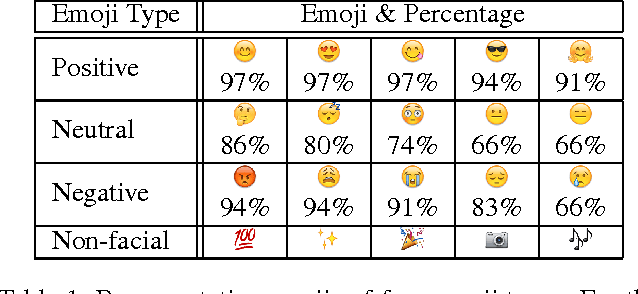Spice up Your Chat: The Intentions and Sentiment Effects of Using Emoji
Paper and Code
Mar 08, 2017



Emojis, as a new way of conveying nonverbal cues, are widely adopted in computer-mediated communications. In this paper, first from a message sender perspective, we focus on people's motives in using four types of emojis -- positive, neutral, negative, and non-facial. We compare the willingness levels of using these emoji types for seven typical intentions that people usually apply nonverbal cues for in communication. The results of extensive statistical hypothesis tests not only report the popularities of the intentions, but also uncover the subtle differences between emoji types in terms of intended uses. Second, from a perspective of message recipients, we further study the sentiment effects of emojis, as well as their duplications, on verbal messages. Different from previous studies in emoji sentiment, we study the sentiments of emojis and their contexts as a whole. The experiment results indicate that the powers of conveying sentiment are different between four emoji types, and the sentiment effects of emojis vary in the contexts of different valences.
 Add to Chrome
Add to Chrome Add to Firefox
Add to Firefox Add to Edge
Add to Edge